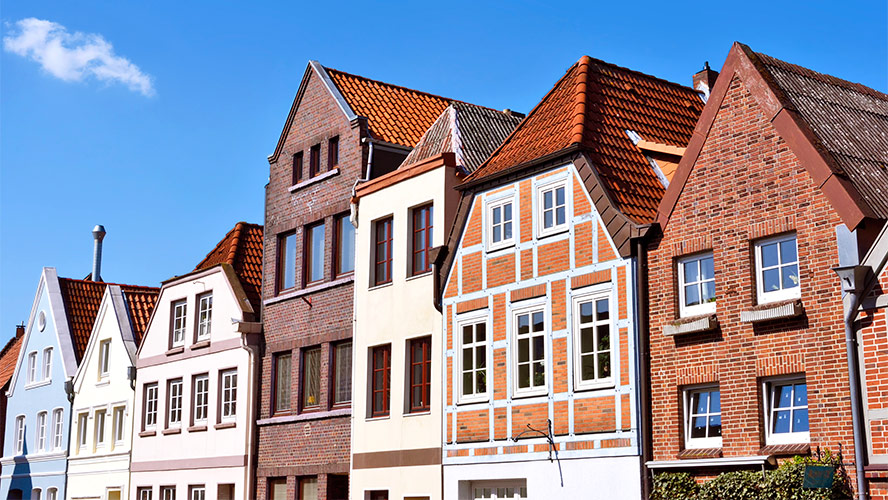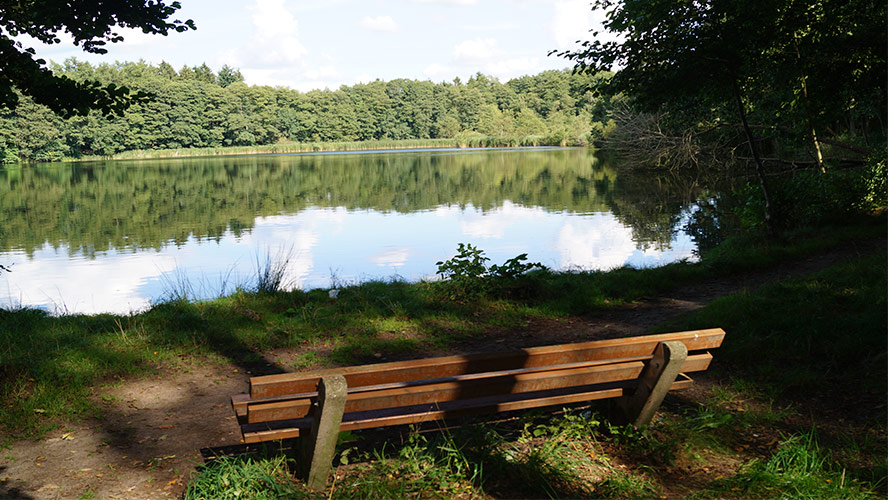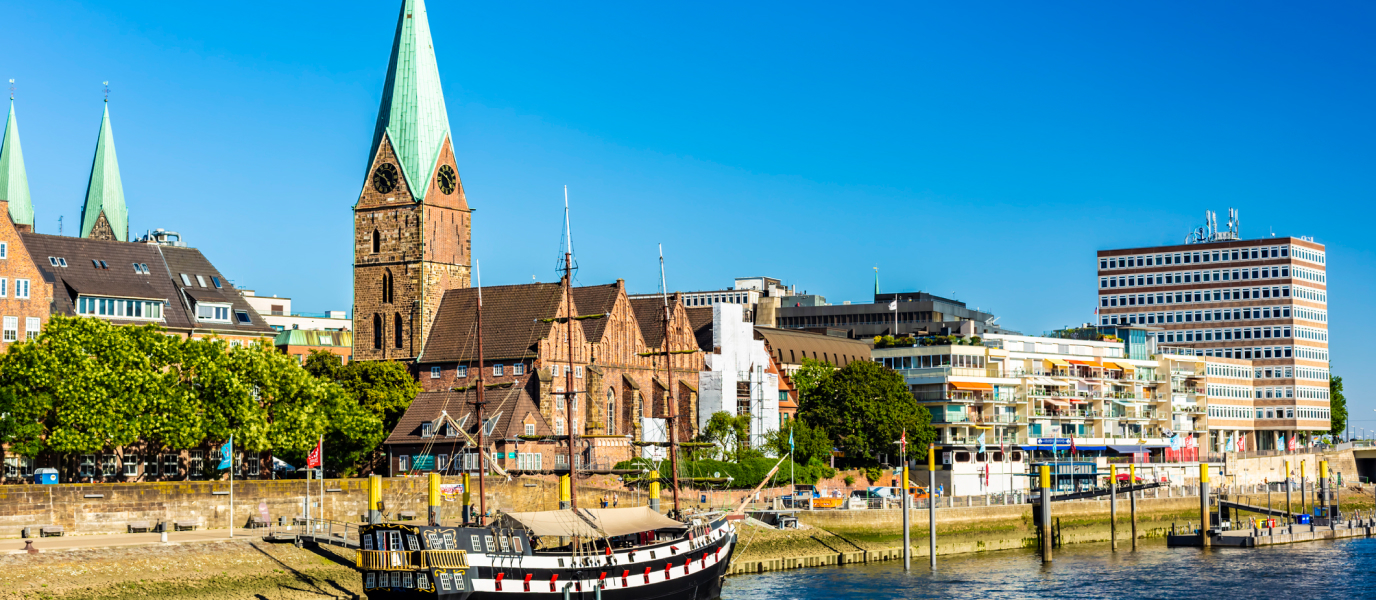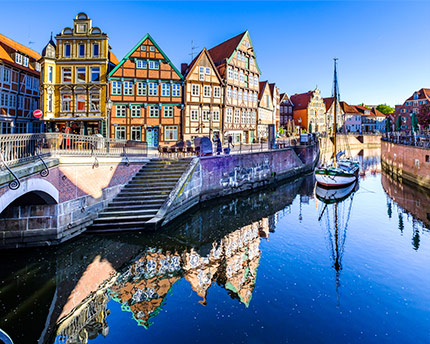One of the towns to visit around Hamburg is Buxtehude, a lovely village with a population of 40,000 inhabitants, perfect for a half-day trip if you are travelling in northern Germany. Let’s get to know the most interesting things to visit in Buxtehude!
Buxtehude is one of the cities of the Hanseatic League, the powerful federation of northern European cities created during the Middle Ages to promote trade in these Baltic territories.
It was in the 14th century that Buxtehude took shape and obtained the title of city. Its position with two parallel rivers, the Este and Viver, and a canal in between, the Fleth, meant that the city developed into an important port for the time in the Elbe valley area. In 1369 it joined the Hanseatic League.
One of Buxtehude’s main commercial activities was the cattle trade, with routes going to the Netherlands or even Italy. However, the growth of neighbouring Hamburg and its powerful port relegated Buxtehude to the background.
Today we can see part of that legacy belonging to a rich past. Buxtehude still has the houses, the medieval fabric, and the canals that, at that time, witnessed a remarkable commercial and economic activity, the origins of the town’s prosperity.
Buxtehude is also known for being part of the German Fairy Tale Route. The fairy tale The Hare and the Hedgehog by the Brothers Grimm is set here. These animals are represented in a fountain in the city.
Alstadt or historic centre
The Alstadt is the historic centre of the town, the heart of Buxtehude, which is not to be missed. Narrow streets, cobblestone pavements, houses with typical wooden beams and red roofs…German aesthetics at its best. You should walk through the Alstadt and lose yourself, let yourself be carried away by the tranquillity.
The historic centre of Buxtehude is very tightly packed and less than 400 metres long, so you won’t have any trouble walking through it. It’s surrounded by the rivers Viver in the west and Este in the east, and crossed by the Fleth Canal in the centre. The canal area is one of the most enjoyable for a stroll.
In the Alstadt you shouldn’t miss the town hall building, which was destroyed by fire in 1911 and rebuilt later, but retains some of the furnishings and aesthetics of its predecessor. A visit to some of its rooms is well worthwhile.

Carillon and Stavenort Street
Stavenort Street is home to some of the most beautiful houses to be seen in Buxtehude. There you will also find the Glockenspiel, or Stavenort carillon, which has 24 bells. It was inaugurated in 2008 and rings every day at 11:30, 15:30, and 16:30.
St. Petri Church
Stavenort Street leads to St. Petri Square (St. Petri Platz), where St. Petri Church, the most prominent church in the city, is located. This evangelical church was built between 1285 and 1320, is Gothic in style and has a large central tower of 75 metres on its main façade, which was destroyed by lightning in 1853 and later restored.
Inside St. Petri’s, the main altar with an altarpiece from 1710, the baroque pulpit from 1674, or the Furtwangler organ from 1859, with 3,300 pipes, considered one of the most important in northern Germany, stand out.
You use your visit to St. Petri’s Church as an opportunity to climb the tower from where you can see the whole of Buxtehude.
Buxtehude’s Central Dock, the historic heart of the city
As we mentioned before, the historic centre of Buxtehude is situated in the space between the rivers Viver and Este. Right in the middle is the Fleth Canal, which runs some 250 metres into the town centre. This is where the city’s activity took place in its heyday, where ships used to load and unload goods at the city’s old central dock.
Today, the site is nothing more than a peaceful space at the foot of a canal surrounded by magnificent houses that reflect the prosperity of the past. At the end of the Fleth canal awaits the Ewer Margareta, a cargo ship anchored to serve as a reminder of the town’s past prominence.
Right at the entrance to Fleth stands the Marschtorzwinger, a large circular tower from the 16th century, which was part of the city walls.

Where to eat in Buxtehude
If you’re planning to spend a day or a few hours in Buxtehude, you might want to eat there. Here are some of the best places to eat in Buxtehude:
● Amadeus: one of the best restaurants in Buxtehude, located in a beautiful place that takes us back to the city’s most prosperous times. An extensive menu featuring meat, fish, soups, salads, and other dishes. It has a stone oven where they make homemade pizzas.
● Abthaus: in service since 1399. Another well-known restaurant where you can enjoy fish or the popular schnitzel.
● Bier-Baum: a small beer garden with a very good atmosphere, ideal for trying several beers and eating some homemade food.
● Raatskeller: typical German food with its own beer. Bratwurst sausages are a must.
● Der Primus: an interesting wine bar where you can combine good wines with some bar food.
Where to stay near Buxtehude
The ideal way to visit Buxtehude is to head there during the day, as it only takes a few hours to see everything, so you can stay directly in Hamburg and travel by train or car.
In Hamburg, the Barceló Hamburg is an excellent choice for your accommodation, due to its location and quality. It’s located next to the train station, where you can take a direct train to Buxtehude. The hotel is also centrally located for exploring the city on your own.


































































